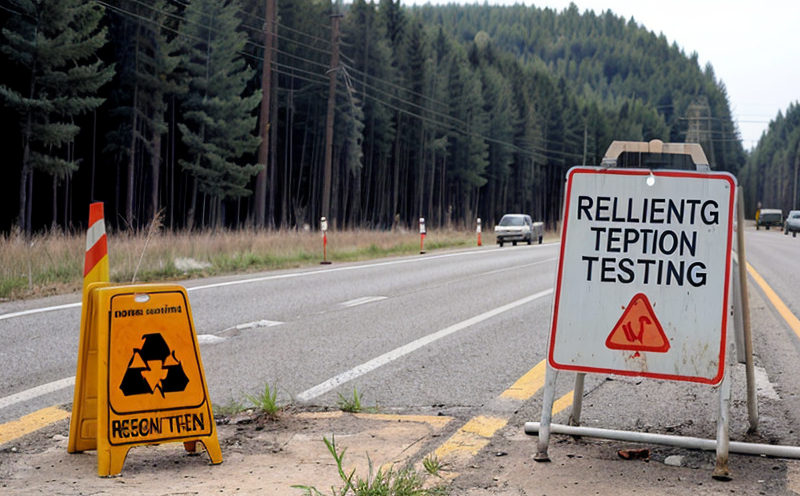ISO 11665-8 Radon Concentration Measurement in Buildings
The measurement of radon concentration in buildings is a critical aspect of environmental radiation testing, particularly in sectors such as residential construction and public infrastructure. ISO 11665-8 provides the necessary framework for accurate quantification using passive samplers designed specifically for this purpose. This standard ensures that measurements are reliable and comparable across different locations and time periods.
Radon is a naturally occurring noble gas produced by the decay of uranium in soil, rock, and water. It can enter buildings through gaps around pipes and foundations, posing potential health risks due to its radioactive nature. The primary concern is long-term exposure leading to lung cancer. Therefore, compliance with ISO 11665-8 is essential for ensuring that indoor air quality meets safety standards.
The standard specifies procedures for the collection and analysis of passive samplers placed within buildings over defined periods. It outlines requirements for sample design, installation, and data interpretation. Compliance involves meticulous attention to detail during every step from initial site survey through final report submission.
| Parameter | Description |
|---|---|
| Sample Design | Involves assessing the building layout, ventilation patterns, and potential sources of radon ingress. This step helps determine optimal placement for samplers. |
| Installation | Ensures correct positioning inside the structure according to specified guidelines to avoid bias in results. |
| Data Interpretation | Involves analyzing collected data against established thresholds set by regulatory bodies like WHO (World Health Organization). |
| Reporting | Generates comprehensive reports detailing findings along with recommendations for improvement if necessary. |
The process begins with a thorough site assessment followed by the deployment of passive samplers. These devices capture radon over extended periods, typically two months, allowing for accurate measurement of average concentrations throughout the monitoring period. After collection, samples are transported to our accredited laboratory where they undergo rigorous analysis using sophisticated equipment.
Our team adheres strictly to ISO 11665-8 requirements ensuring precision and accuracy in all stages from sampling to reporting. By doing so, we provide stakeholders with reliable information about radon levels within their properties. This enables proactive measures to mitigate risks associated with elevated concentrations while maintaining compliance with relevant regulations.
Benefits
- Health Protection: Ensures safe living and working environments by reducing exposure to harmful radon levels.
- Regulatory Compliance: Meets international standards set forth by organizations like ISO, providing peace of mind regarding legal obligations.
- Risk Management: Identifies high-risk areas early on allowing for targeted interventions before issues escalate.
- Data Accuracy: Utilizes advanced technology and strict protocols to deliver precise measurements essential for informed decision-making processes.
By adopting ISO 11665-8 compliant practices, organizations can significantly enhance their reputation as responsible corporate citizens committed to safeguarding public health. Moreover, this initiative fosters trust among clients who appreciate transparent communication regarding indoor air quality issues.
Quality and Reliability Assurance
- Precision: Utilizes state-of-the-art analytical instruments capable of detecting trace amounts of radon with minimal margin for error.
- Accuracy: Follows stringent calibration procedures ensuring consistent results across multiple samples taken under identical conditions.
- Consistency: Maintains uniform standards throughout the entire measurement process from start to finish.
- Transparency: Provides detailed documentation and records supporting every aspect of our testing methodology, enhancing credibility and accountability.
We employ robust quality assurance measures at each stage of the ISO 11665-8 compliance workflow. From initial planning through final reporting, we maintain high standards of integrity and reliability. Our commitment to excellence is reflected not only in the technical aspects but also in our dedication to continuous improvement based on feedback from clients.
Use Cases and Application Examples
ISO 11665-8 radon concentration measurement finds application across various sectors including residential housing, commercial buildings, schools, hospitals, and government facilities. Here are some real-world examples illustrating its utility:
- Residential Housing: A developer wishes to ensure that newly constructed apartments meet safety standards before occupancy.
- Commercial Buildings: An office complex needs periodic checks to maintain compliance with local regulations regarding occupational health and safety.
- Schools: Educational institutions aim to protect students' and staff members' well-being by conducting regular inspections of their facilities.
- Hospitals: Healthcare providers focus on creating safe environments for patients, visitors, and employees alike.
In each case, adherence to ISO 11665-8 guarantees that radon levels are accurately determined ensuring peace of mind for all parties involved. These examples highlight the versatility and importance of this standard in diverse settings where indoor air quality plays a crucial role.





